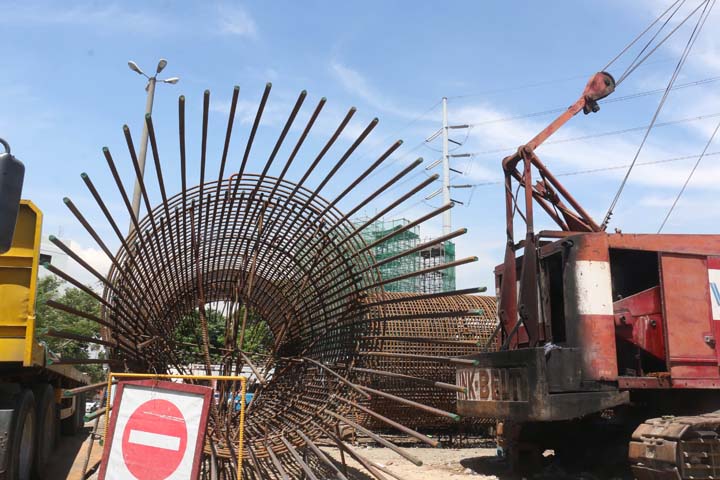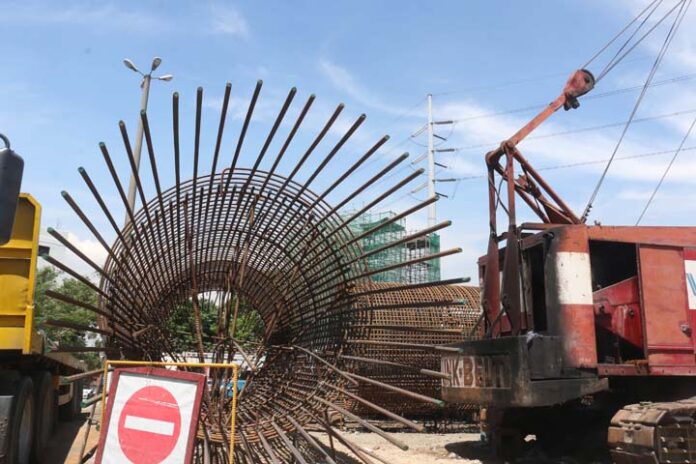
THE National Economic and Development Authority (Neda) has expressed confidence that the Duterte administration will be able to complete over 3,000 big and small infrastructure projects by next year.
In a mid-year briefing, copresented by the Economic Journalist’s Association of the Philippines (EJAP) and Filinvest REIT FR on Tuesday, Socioeconomic Planning Secretary Karl Kendrick T. Chua said this was despite the delays caused by the pandemic.
Chua said 314 of the projects have already been completed as of June 2019 and 2,800 are set to be completed by 2022. These projects are part of the medium-term Public Investment Program (PIP) of the administration.
“We are on track and the mere fact that we have exceeded 5 percent of GDP projection
in 2019 and 2021 and also maintain [that] in 2022, shows that our infrastructure program is very well on track,” Chua said.
Chua explained that the majority of the infrastructure projects being undertaken by the administration are “small-scale” and are largely locally-funded infrastructure works.
The number of projects expected to be completed by next year still does not include the flagships or the game-changing infrastructure projects of the administration.
These projects, including the 112 infrastructure flagship projects, comprise the PIP. The government intended to spend P7.74 trillion for infrastructure between 2016 and 2022 under the PIP for 2017 to 2022.
Chua declined to share information on the flagship projects as the government intends to unveil the composition of the list as well as the updates on the projects on Friday.
“Last year, this year, and next year are more challenging because of Covid, because of the difficulties of getting some projects started or maintaining their momentum given the pandemic and the quarantines,” Chua said.
“The far majority of projects are small-scale or locally funded that are provided a budget annually. This year and next year, we are funding at least P1 trillion,” he added.
Growth, National ID
Meanwhile, Chua said the gradual lifting of quarantine restrictions and continuous vaccination rollout will help the Philippine economy recover with growth of 6 to 7 percent in 2021 and return to prepandemic levels by 2022.
Unlike last year when 75 percent of the economy was closed, this year’s lockdown allowed greater mobility, Chua said. The government, he added, only closed 25 percent of economic activities compared to the normal period.
The Neda chief also stressed that the country’s economic potential remains. Unlike last year, the economy is projected to grow at 6 to 7 percent in 2021 and 7 to 9 percent in 2022 as the government recalibrated its risk management strategy.
He said vaccination is crucial in restoring the people’s confidence in resuming economic activities. Vaccine deployment for the A4 group of workers began on June 7, 2021. As of June 13, 2021, close to 7 million doses have been given to priority groups A1, A2, A3, and A4.
“There are three pillars that will govern this recovery. The first is reopening the economy at the appropriate time and allowing an expanded age group to go out with safeguards, including the resumption of face-to-face learning in low-risk areas,” Chua said.
“The second is the accelerated implementation of the recovery package, consisting of more than P2 trillion or 15 percent of GDP, in terms of fiscal, monetary, and financial resources. The third is the timely implementation of the vaccination program,” he added.
Apart from these efforts, Chua said the national government is also preparing for the new normal, particularly digitization. He said the National ID will also strengthen human capital development and aid in the country’s recovery.
Chua said the Philippine Identification System (PhilSys) or the National ID program is on track to meet its target of 50 million to 70 million registrations by the end of 2021.
To date, Chua said, over 35 million Filipinos have completed Step 1 and the government has already reached 64 percent of its June target for Step 2.
After being appointed as the country’s Chief Economist last year, Chua was given three marching orders by the President—crafting the national recovery plan, fast-tracking the national ID, and rebooting the country’s Build, Build, Build (BBB) program.
Chua assured the public that the Neda under his guidance will rely on evidence and listen to various stakeholders when making policy recommendations to the President.
Read full article on BusinessMirror



